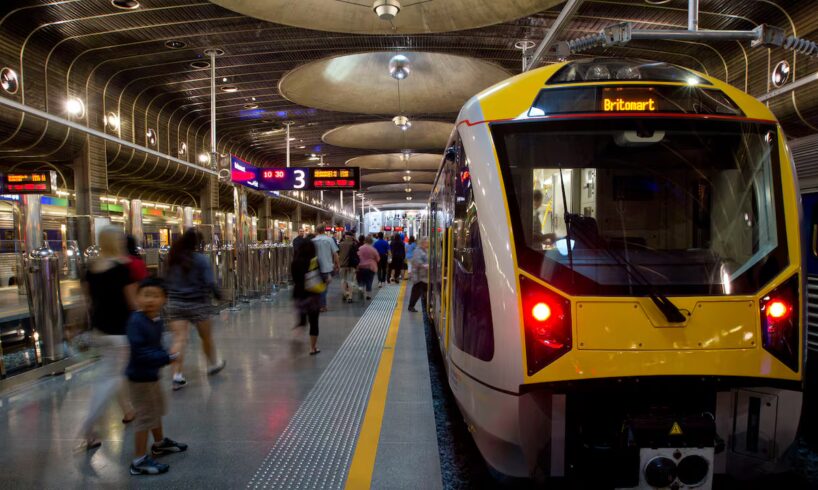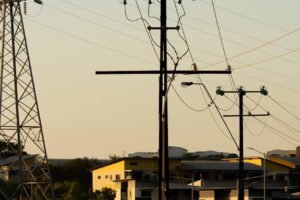
It will allow them to use a single digital account, and directly scan smart devices such as phones and watches, or credit and debit cards instead.
It was originally estimated to have a Benefit Cost Ratio (BCR) of 1.7, meaning that it would produce $1.70 worth of benefit for every $1 of cost, over 14 years.
Benefits largely accrue through increased customer convenience, higher patronage and reduced road congestion.
The ratio was key to the project and spending getting the green light from the then Labour Government in 2022.
However, a recent BCR recalculation, provided in official advice to ministers and the programme’s governance board, found it has fallen to 1.4.
Chris Bishop, Minister for Transport, said he’s concerned about delays that have hampered the $1.4b national ticketing programme. Photo / Michael Craig
The advice, released under the Official Information Act, noted that the BCR recalculated around the middle of this year was flattered by a higher monetary value for reducing congestion and a very low discount rate.
The 2025 BCR was calculated with a 2% discount rate, while the 2022 BCR used a rate of 4%.
If the same 4% discount rate was used in 2025, the BCR recalculation would have landed between 1.2 and 1.4, according to retired Treasury official Dieter Katz, who has expertise in cost-benefit work.
It’s not possible to say exactly how much difference the lowered discount rate made as the calculation depends on how costs and benefits are distributed over time. Some of this detailed information was redacted from the Detailed Business Case.
The discount rate is important in cost-benefit calculations, as it recognises that the value of money spent or benefit enjoyed in the future is lower, generally speaking, than the value of having that money or benefit today.
It is broadly clear that the benefits of the NTS skew to the later years, and a lower discount rate will have increased their value.
Auckland’s trains, buses, and ferries will be the last to join the national ticketing system, now planned for late 2027. Photo / Michael Craig
The cost benefit work reflects a comparison of the national ticketing scheme to a more piecemeal “regional upgrade” alternative.
NZTA has followed Treasury’s lead in using the lower discount rate in the 2025 rework. The Treasury now recommends, somewhat contentiously, that the lower discount rate be used for “social and environmental” – as opposed to “commercial” – projects.
Independent review painted a problematic picture
The NTS’s eroding benefits feature in an independent review of the programme, commissioned by NZTA and produced in July.
It found: “a very high likelihood of further significant delays to National Ticketing System (NTS) programme delivery and an inability to deliver the full scope within the committed contract value”.
NZTA’s announcement of the full implementation delay until 2027 came shortly after it released the review.
The current plan remains that concessions, fares that vary by region and other variations (such as Auckland’s seven-day fare cap) will be recognised and reflected in the fares automatically charged to customers.
Full functionality, however, may be in doubt. The report is heavily redacted in places, but notes: “acknowledge the delivery track record to date, the functionality backlog yet to be built”.
Among the review’s red flags were a variety of problems related to the technology provider Cubic.
The US-based company specialises in defence and transport systems and holds a $474.2m contract with NZTA to supply the ticketing product, configure it and operate it for 10 years after the last of the three large public transport authorities (Auckland Transport, Greater Wellington Regional Council and Environment Canterbury) transition to the new national system.
The review recommended that NZTA “assess Cubic’s team size and capability” and noted that “Cubic must commit additional global expertise dedicated to the programme”.
The review found deficiencies in areas including: programme management and governance; programme scheduling; decision-making; focus on deliverables; and planning to continue the operation of the legacy fare collection systems in Canterbury and greater Wellington through an interim period.
However, it identified “no strong rationale not to proceed with the NTS at this point”.
Scrapping the programme not on the table
Transport Minister Chris Bishop said he has been very open about his concerns, but scrapping the project is not on the table.
He told the Herald: “I have also made it clear that I expect NZTA to get on with delivering it”.
“I have met with the NTS governance group to encourage them to exercise leadership, get the project back on track, and focus on delivering a ticketing platform that works well for New Zealanders.”
He said NZTA is implementing the recommendations from the independent review.
The Detailed Business Case for the NTS had a total budget of $1.338b.
An NZTA spokesman said this was increased by $20m to $1.358b, to help implement Auckland Transport’s “open loop”.
Through its own regional ticketing system, Auckland Transport moved to a contactless payment system late last year.
Listen and subscribe to the Today in Business podcast – the top headlines from the NZ Herald business team summarised and delivered by an artificial intelligence (AI) voice as an easily digestible recap.
Source





